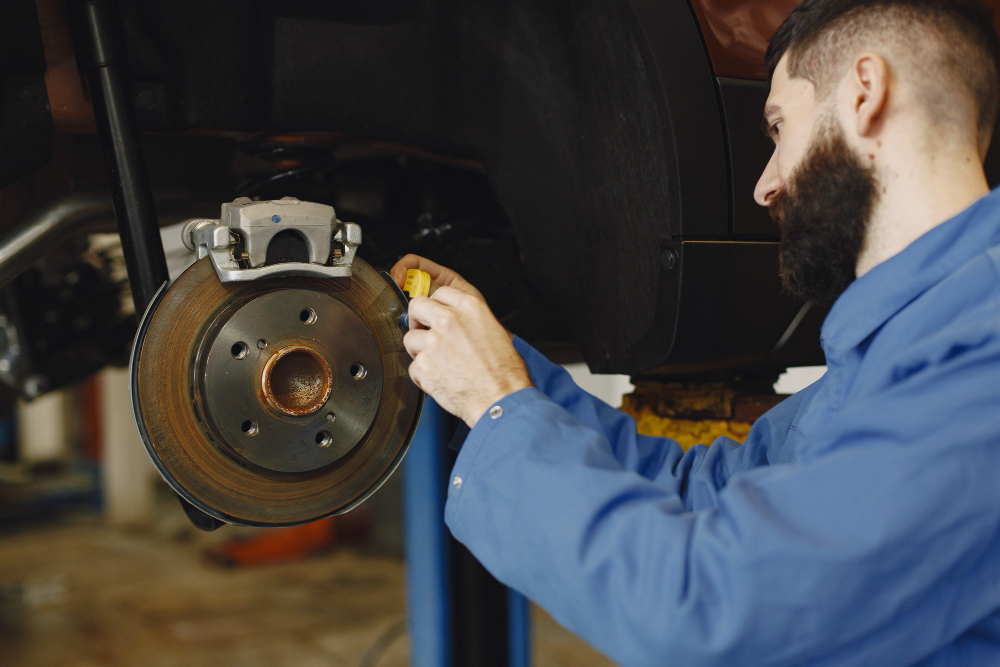Whether you’re traversing rugged trails, conquering dunes, or simply enjoying the vastness of the great outdoors, your ATV is your trusted companion in adventure. But every thrilling ride hinges on the reliability of one crucial component—your brakes. Understanding the essentials of ATV brake repair and maintenance not only ensures your safety but also enhances your vehicle’s performance, making each ride as exhilarating as the first.
The Vital Role of Brakes in ATV Safety and Performance
Brakes are the unsung heroes of ATVs, silently working to guarantee your safety and the integrity of your adventurous pursuits. Imagine descending a steep incline or navigating a sharp turn; it’s your ATV’s braking system that stands between you and potential peril. Regular maintenance isn’t just advisable—it’s imperative.
How ATV Brakes Work: The Basics
ATV braking systems typically use hydraulic disk brakes. When you apply pressure to the brake lever or pedal, brake fluid is forced through the lines into the caliper, pushing the brake pads against the rotor. This action creates friction, slowing down your ATV. Understanding this process is the first step toward effective brake maintenance.
Recognizing the Signs of Wear
Brake maintenance begins with recognizing the signs of wear:
- Reduced responsiveness or fading under pressure
- Squealing or grinding noises during braking
- Increased stopping distances
- A spongy or soft feel to the brake lever or pedal
If you notice any of these symptoms, it’s time for a brake check-up. Ignoring these signs can lead to brake failure, putting you and others at risk.
DIY Guide to Inspecting and Maintaining Your ATV Brakes
Regular inspection and maintenance can prevent most brake issues. Here’s a step-by-step guide to keeping your brakes in top condition:
- Visual Inspection: Check brake pads for wear. Most pads have a wear indicator notch; if the pad material is level with or below this notch, it’s time for replacement.
- Brake Fluid Level and Quality: Inspect the brake fluid level in the master cylinder reservoir, and ensure the fluid is not discolored or contaminated.
- Check Brake Lines: Look for any leaks, cracks, or signs of wear in the hydraulic lines.
- Rotor Condition: Inspect the rotor for grooves, warping, or damage. A warped rotor can lead to uneven brake pad wear and reduced braking efficiency.
Common Brake Repair and Maintenance Tasks
For those who enjoy a good DIY project, here are some common brake maintenance tasks:
- Replacing Brake Pads: This is a relatively simple procedure you can do at home with basic tools.
- Bleeding Brake Lines: Necessary when air enters the brake lines, bleeding helps restore brake responsiveness and firmness.
- Replacing Brake Fluid: Over time, brake fluid can absorb moisture from the air, leading to corrosion and decreased braking performance.
Tools and Equipment You’ll Need
- Wrench set
- Brake bleeding kit
- Jack and jack stands for safely raising your ATV
- Gloves and safety glasses
Safety First
When working on your ATV’s brakes, always prioritize safety. Use jack stands to securely support your ATV, wear protective gear, and work in a well-ventilated area to avoid inhaling brake dust.
The Role of Expert ATV Brake Maintenance
While regular DIY maintenance can prolong your brakes’ lifespan, it’s crucial to have a certified mechanic inspect and service them at least once a year. Finding a trustworthy and knowledgeable ATV repair mechanic in Salt Lake City is key to ensuring your ATV’s brakes are in top condition. They have the expertise and specialized equipment to diagnose and repair any potential issues you may not be able to detect yourself.
Rounding Off With a Call to Action
Ensuring your ATV’s brakes are in prime condition is not just about maintenance; it’s about cultivating a culture of safety and performance. Regular DIY checks and professional maintenance are critical to guaranteeing your safety and enhancing your ATV’s performance. So, don’t wait until the next ride; schedule a brake check-up today and keep conquering those trails with confidence! Happy riding!

